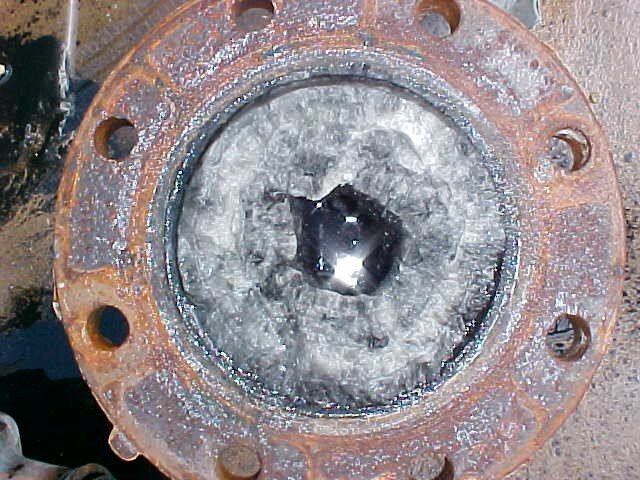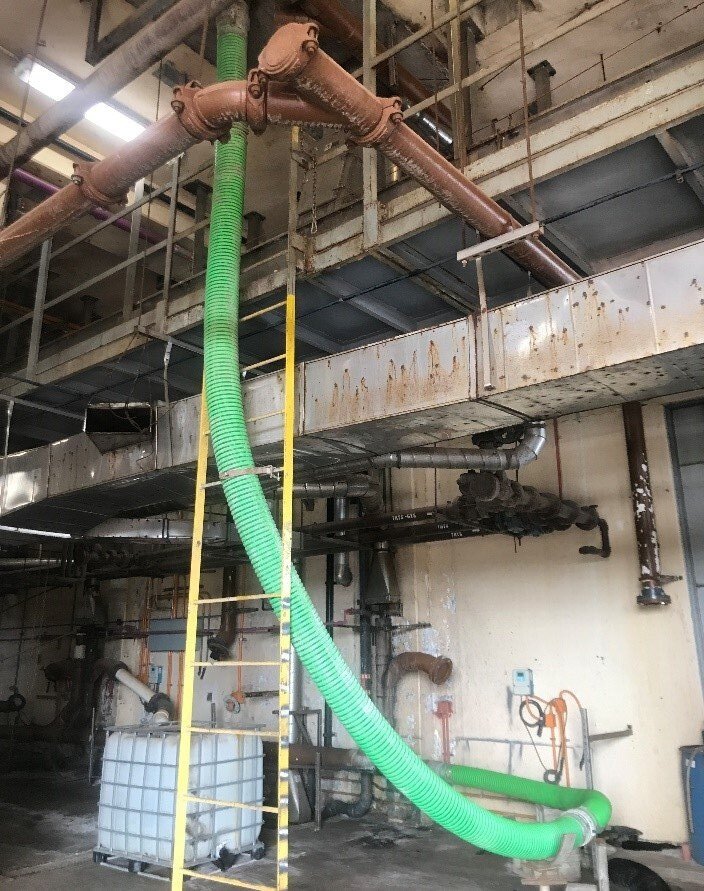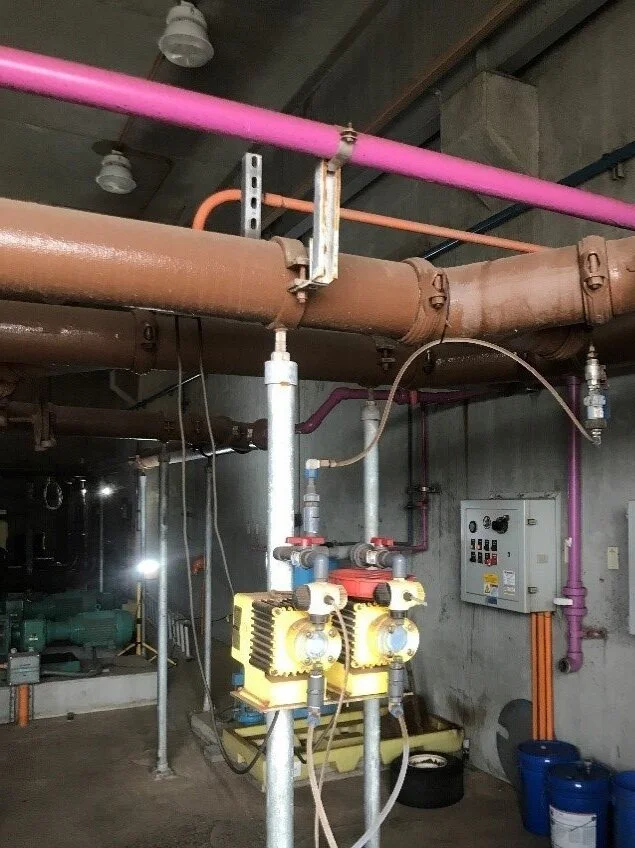The purpose of this study was to investigate the causes of the current struvite crystallization problems in the solids process piping and equipment at the Honouliuli Wastewater Treatment Plant (HNLIWWTP). MME, along with a multidisciplinary team of experts, reviewed the existing plant conditions and available data, developed sampling methodology, identified the conditions causing current issues, and modeled the plant processes to predict future struvite problems that could result from an ongoing secondary treatment process upgrade at the plant.
What Is Struvite?
Struvite is formed from the combination of magnesium, ammonium and phosphate, with the chemical formula NH4MgPO43-. High levels of ammonia (NH4+) and phosphate (PO43-) are formed as part of anaerobic digestion. Magnesium (Mg2+) is a mineral commonly found in wastewater, and can come from the intrusion of seawater. At oversaturated concentrations and high pH conditions, struvite precipitates and deposits on piping and equipment.
Struvite in digester piping. Source: Dr. David Jenkins, PhD.
Struvite in a pipe elbow. Source: City of San Jose/Santa Clara.
Where Does It Form?
At wastewater facilities, struvite often occurs in anaerobic digesters, dewatering equipment, and centrate lines. Accumulation can be drastic; at one plant the diameter of an 8-inch pipe was reduced to 1.5-inch in a month.
How Do You Mitigate The Formation Of Struvite?
The control of struvite is important to minimize maintenance and damage to piping and equipment, but also provides the beneficial result of reduced phosphorus and ammonium in the return flows to the treatment process. There are four potential approaches to addressing struvite formation at wastewater treatment plants:
Operation Control: Flexible hoses on a centrate line eliminate turbulence which raises the pH of solution, making conditions optimal for struvite.
Process Control:
Example of process control include reducing unintentional biological nutrient removal, or minimizing the inflow and infiltration of seawater. Engineers should design facilities to minimize the use of elbows, especially in areas where there are high concentrations of the chemicals that lead to struvite, for example, in the centrate lines.
Operation and Maintenance Control:
Includes routine cleaning or pressure washing of piping, pumps, or valves with water or acidic solutions. Reducing turbulence by removing or reducing the number of valves or elbows and replacing piping with flexible tubing is an economical solutio
Chemical Control: Dosing chemical to the digested sludge lines can prevent struvite from forming in piping and dewatering equipment.
.
Chemical Control:
Ferric chloride (FeCl3) dosing to reduce struvite formation is the most common struvite management practice. Other chemicals such as magnesium hydroxide or proprietary anti-scalant chemicals are also effective, but each have their own advantages and disadvantages.
Struvite Recovery:
The process of recovering phosphorus removes struvite formation potential and can generate revenue as a commercial fertilizer product. The capital cost of struvite recovery technologies is considerably higher than chemical addition alternatives. The economic viability relies on the fertilizer product revenue or cost savings resulting from improved process efficiencies in dewatering, digestions, or nutrient removal.





